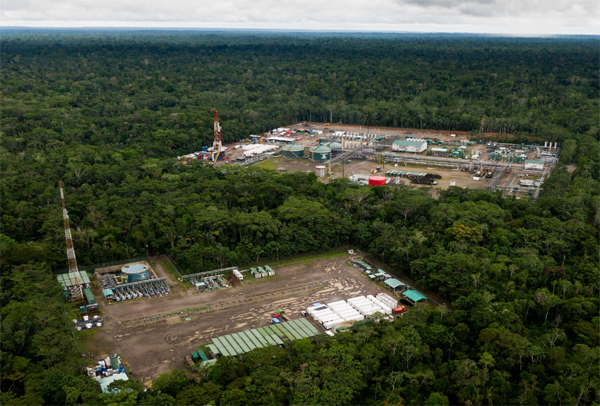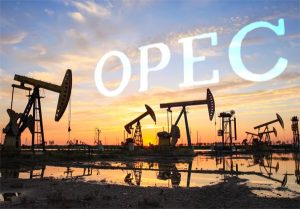“One in every nine tanks of gas, diesel or jet fuel pumped in California comes from the Amazon,” one researcher said.

Catrin Einhorn, NYTimes
NEW YORK
EnergiesNet.com 01 27 2023
If you live in California, you may have a closer connection to oil drilling in the Amazon rainforest than you think.
In a recent article, Manuela Andreoni, Erin Schaff and I took readers to Yasuní National Park in Ecuador, one of the most biodiverse places on the planet and home to Indigenous groups that live in isolation. The Ecuadorean government, cornered by debt and the need for revenue, is drilling for oil in a parcel of rainforest there that it once sought to protect.
Much of that oil, advocates say, is shipped to California for processing. In fact, half of the crude exported from the Amazon overall goes to California, according to a report by Amazon Watch and Stand.earth, two nonprofit groups that work to protect the rainforest. They also modeled how that oil is distributed once it’s refined.
“One in every nine tanks of gas, diesel or jet fuel pumped in California comes from the Amazon,” said Angeline Robertson, the lead author of the report and a senior researcher at Stand.earth. “So if you take nine trips somewhere, one of those trips was Amazon oil.”

Shon Hiatt, a professor at the U.S.C. Marshall School of Business who specializes in energy and was not involved with the research, told me the results were in line with what he would expect.
The Amazon rainforest is home to vast genetic diversity, much of it unstudied, that could unlock medical cures or technological innovations. The region stashes away planet-warming carbon and influences rainfall across South America. But the Amazon is besieged by deforestation and climate change, and it is reaching a tipping point, scientists say. Some parts of the region already emit more carbon than they store.
“We know that we need a phaseout of fossil fuels all over the world, but this is really one of the last places on earth we should be looking for fossil fuels,” said Kevin Koenig, director of climate, energy and extractive industry at Amazon Watch.
Most of Ecuador’s oil lies beneath the rainforest, and the government insists that it can drill responsibly there, minimizing deforestation and pollution. Moreover, officials say they need the money. Oil supplies more than a third of the government’s revenue, and helps make payments on the country’s yawning debt.
Despite decades of oil production in the Amazon, though, Indigenous communities nearby remain poor.

Ecuador has long exported oil to California, in part because the two regions produce similar types of relatively heavy oil.
“Ecuadorean crude looks like the California crude,” said David J. Hackett, chairman of Stillwater Associates, an energy consulting firm. “The refineries were built to run that kind of stuff, and as it dried up in California, they went looking for crude supply elsewhere. And Ecuador is frankly the closest place that has a kind of a match.”
Another connection is the long and often troubled history of American companies in the Ecuadorean Amazon. Chevron, for example, which has its global headquarters in San Ramon, Calif., is a major buyer of Ecuadorean oil today. The company is also involved in a tangled lawsuit over contamination in the Amazon connected to Texaco, which Chevron now owns.
California refineries process crude oil from the United States and all over the world. In 2021, 29 percent of the oil supplying the refineries came from in state, 15 percent came from Alaska, and 56 percent came from abroad. Of the imported crude, more came from Ecuador than anywhere else, with Saudi Arabia a close second.
Hackett, who has worked in the oil industry for years, said it’s hard to say what California should do about Amazonian crude.
“It’s a conundrum,” he told me. “If companies in California say, well, we’re not going to run Ecuadorean crude, then somebody else is going to process it. It’ll go someplace else.”
At the same time, he said, California’s oil producers could use concerns about the Amazon as leverage against Gov. Gavin Newsom’s desire to scale down the state’s own production.
“I think those producers might very well argue that, hey, if you buy California crude oil, you’re not harming the Indigenous people or the rainforest,” Hackett said.

But some communities close to wells in California say they suffer health effects, too. And with Californians already feeling the consequences of climate change, Koenig of Amazon Watch said the state should phase out Amazonian oil while leaning further into the clean energy transition. He said many state leaders didn’t even know about California’s connection to Amazonian drilling.
“In Sacramento, it’s just crazy,” Koenig said. “When you tell lawmakers, policymakers, that this is where the oil is coming from, they have no idea.”
For more:
Catrin Einhorn reports on biodiversity for the Climate and Environment desk. She has also worked on the Investigations desk, where she was part of the Times team that received the 2018 Pulitzer Prize for Public Service for its reporting on sexual harassment. @catrineinhorn
nytimes.com 01 25 2023











